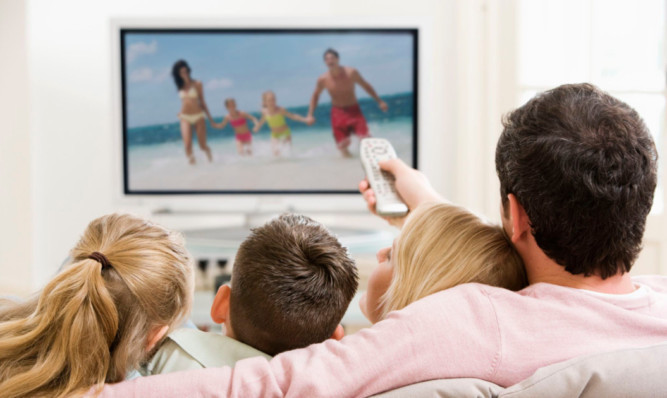
Smart phones and internet bring back that family feeling.
Back in the day mum, dad and the weans would settle on the settee, switch on the telly and enjoy a “shared experience”.
On Christmas Day 1977, a total of 28 million people did just that when they tuned into The Morecambe & Wise Show.
It just doesn’t happen any more, does it?
Today’s tablets, laptops, smart phones and the online world have heralded the demise of television, haven’t they?
Not a bit of it. We might have more choice than ever with hundreds of channels to choose from compared to three in 1977 but our core viewing habits remain the same.
The vast majority of us still gather in the living-room to stare at the telly, watching the same show at the time as everyone else.
And it’s a routine that doesn’t look like changing any time soon, regardless of whatever other electronic gizmos come along to give us even more choice.
The reason is simple, reckons Neil Mortenson, a director at Thinkbox, the marketing body for all commercial TV in the UK.
“Technology changes and develops all the time,” he adds. “But people still like the same stuff.
“The technology we have now on-demand viewing and internet-based services means we can easily create our own TV schedules if we want. But hardly anyone does this.
“Many people thought that was the route TV was heading down and there were all sorts of claims about the death of television.
“But just because we can do something, it doesn’t mean we will and that’s how it’s panned out.”
It might surprise everyone to learn that a whopping 98% of programmes broadcast across the UK are actually watched on a good old-fashioned television set.
And 90% of that total is watched “live” at the time laid out by schedulers. The remaining 10% is generally recorded on a set-top boxes like Sky+ and usually watched within 24 hours.
Of the four hours, two minutes we average a day, just three minutes is internet-based “catch up” TV such as the BBC’s iPlayer and Channel 4’s 4OD which are viewed on laptops, tablets and smart phones.
Neil says there’s a very good reason why in a world where we can watch what we want, when we want 90% still view “live” TV.
“Live TV is an experience that satisfies some deep emotional need,” he explains. “On-demand viewing just doesn’t cut it.
“Take something like the X-Factor final viewers want to see it along with everyone else as it happens. It’s a shared experience.
“It’s the same with great sporting events like the Olympics 26.9 million tuned in for the opening ceremony. And 17 million watched the Queen’s Jubilee concert.”
And far from killing off telly, the internet and social media is helping it thrive by allowing people to “actively participate”. Neil reveals: “It’s called ‘chatterboxing’.
“People are using Twitter or Facebook to talk about the programme they’re watching.
“Obviously, that means they’ve got to be huddled round the telly, watching the same programme at the same time as we’ve always traditionally done.”
Chatterboxing is particularly popular during soaps almost 40,000 tweets are made during an episode of EastEnders. Juicy storylines can see tweets hit 6,000 a minute.
Neil adds: “It’s the same with video content on technological hardware like tablets and smart phones we’re not watching them instead of television, we’re watching them as well as television.
“Average viewing time per day has actually increased by almost a half-hour in seven years.
“The television has become a focal point not just in our living rooms but in our lives. It’s become the home’s hearth, if you like we gather round it to connect and to socialise.
“And that’s not going to change any time soon.”

Enjoy the convenience of having The Sunday Post delivered as a digital ePaper straight to your smartphone, tablet or computer.
Subscribe for only £5.49 a month and enjoy all the benefits of the printed paper as a digital replica.
Subscribe